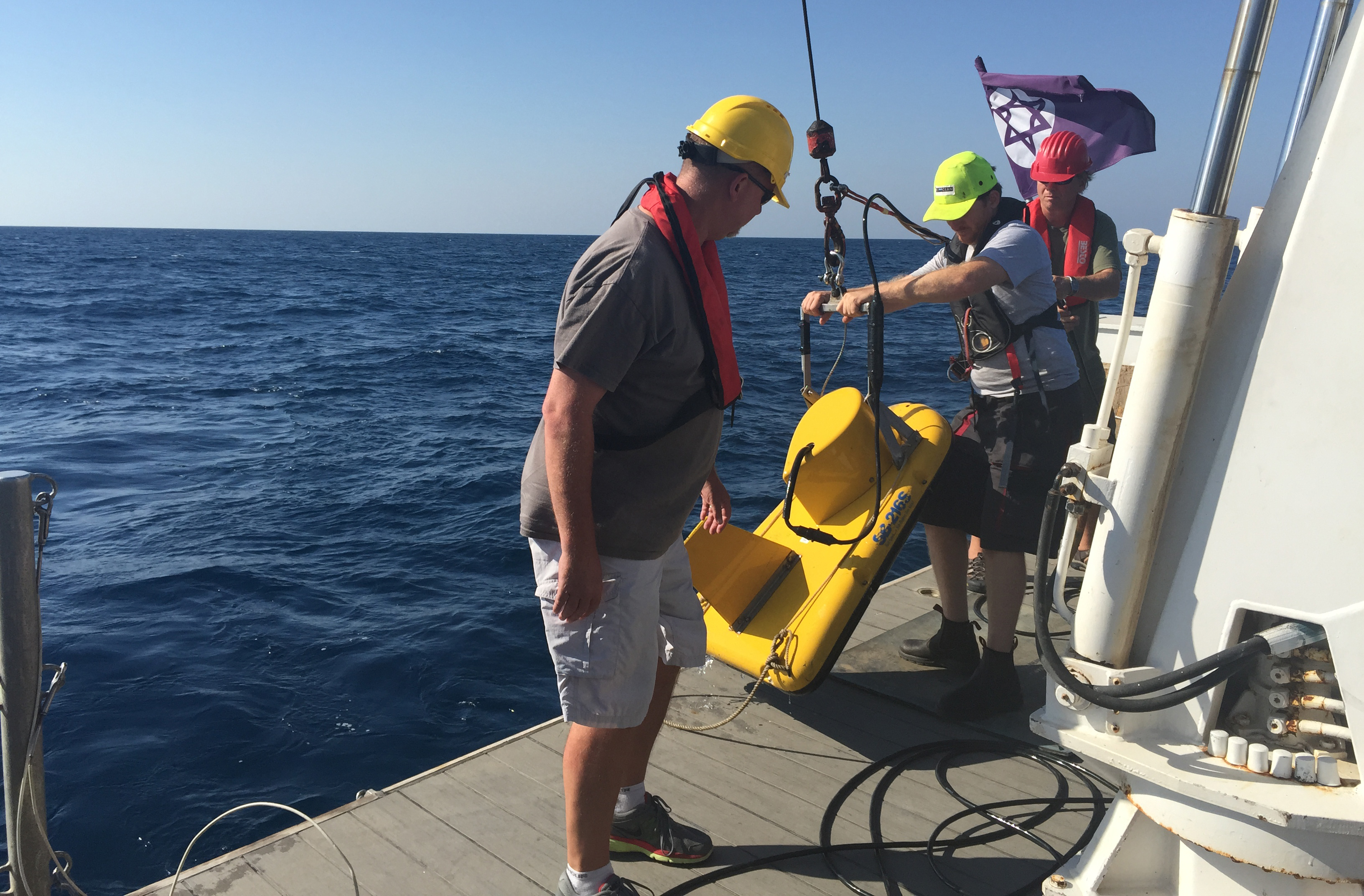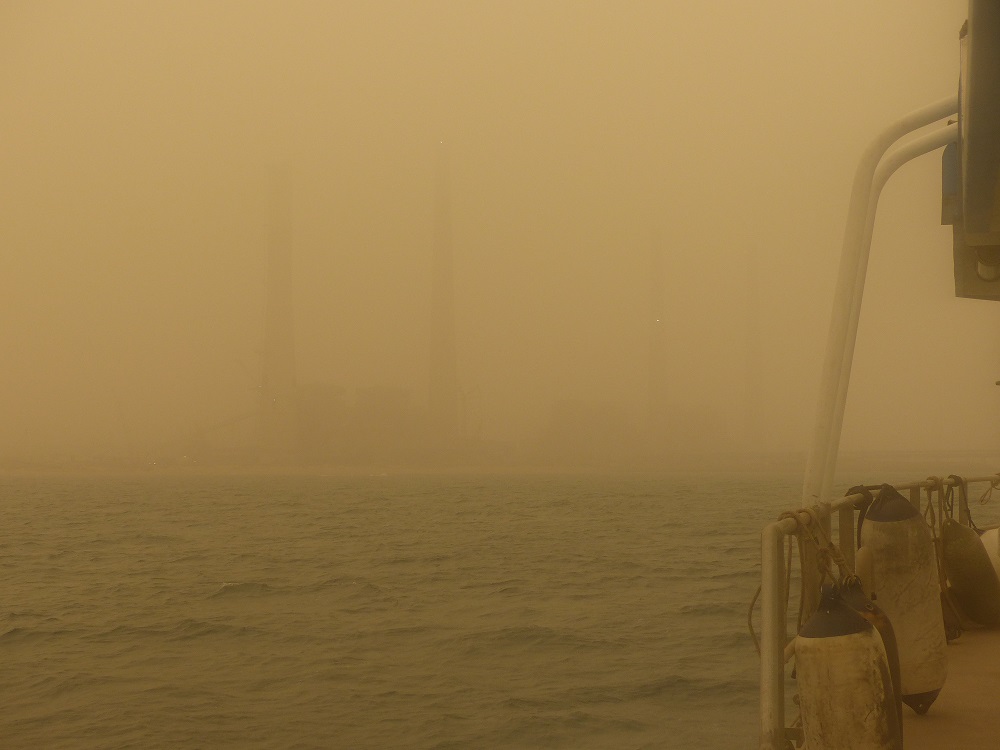
Jamie Austin, senior research scientist at the University of Texas Institute for Geophysics, led an expedition off the Israeli Coast in early September with three other UTIG scientists. Amidst missing gear, a dust storm and one of Israel’s most notable national holidays he took time away from his research to share a bit about the crew’s field work:
We are in the middle of our 6th day of profiling off the Israeli coast, near the ancient Roman city of Caesarea. Our profiling gear was late arriving at our ship, even though it had been received into the country 10 days earlier. As a result, we were about two days late beginning our effort.
Our vessel is Eco Ocean’s Mediterranean Explorer, a 20m vessel which has a much larger “feel.” The four of us have lived on the vessel since September 1, and accommodations are better than on many larger vessels of our experience.
The vessel is very wide, so deploying our multibeam system (on a rotatable pole mount off the starboard side, which the MedEX already had installed) and sidescan sonar and CHIRP fish (the first off a davit on the starboard side, the second from the deck-mounted crane amidships) has been quick and efficient.
We are currently collecting our 56th profile, both in strike and dip directions. We are seeing serious complexity in the partially buried “bedrock,” complex lithified dune ridges (formed during lowered sea level; they also exist along the coast today) composed of coarse sand, and overlying pockets of sediment. We have also observed a number of acoustic “plumes” which may be dispersing gas in the water column. Israel sits on the shore of the eastern Mediterranean, home to new enormous natural gas discoveries hosted by perhaps the thickest sediments of the world’s oceans.
Our team is in high spirits after a slow start, and the current Syrian dust storm wafting around us has not dampened our enthusiasm.
We should be concluding the survey this coming weekend, before the beginning of Israel’s New Year celebration, Rosh Hashanah.


